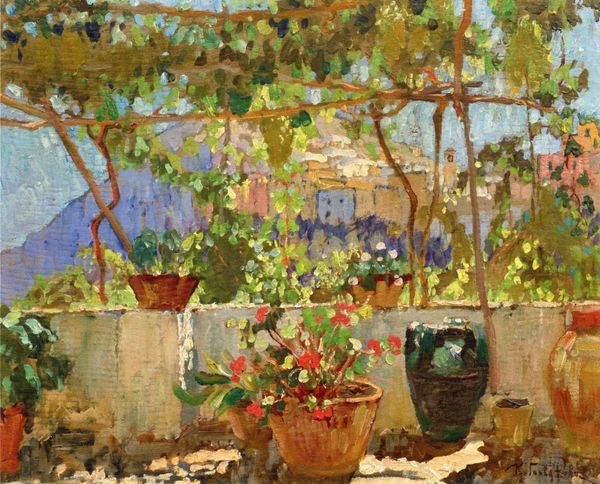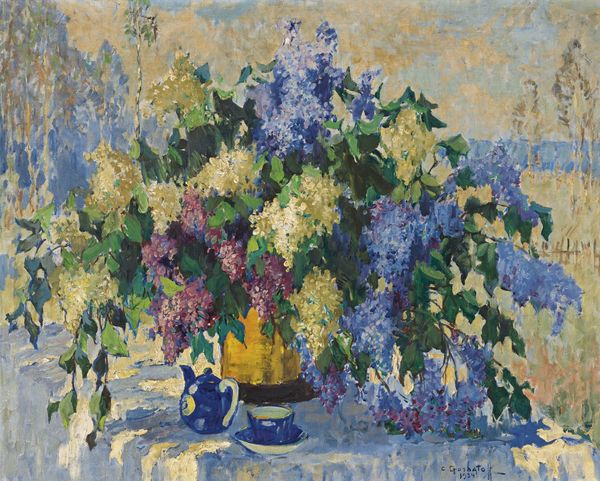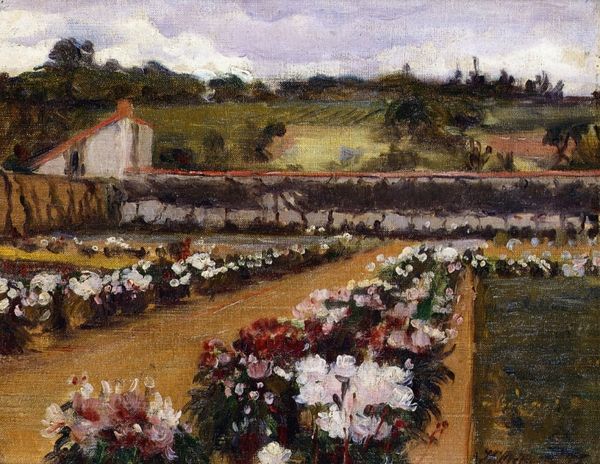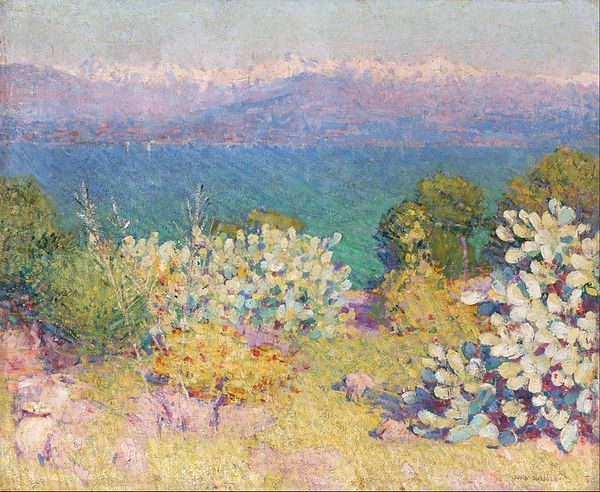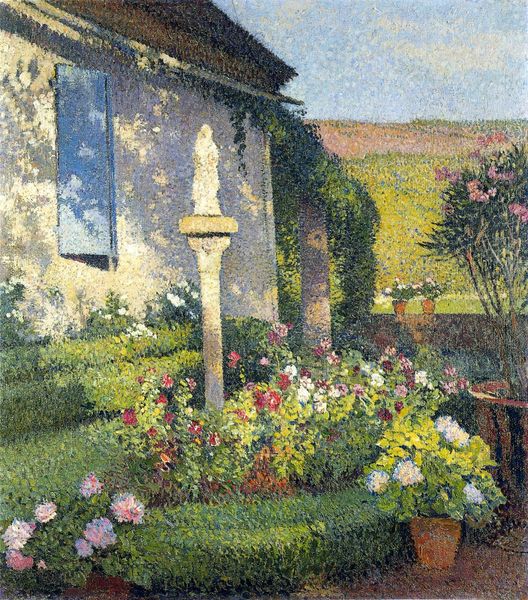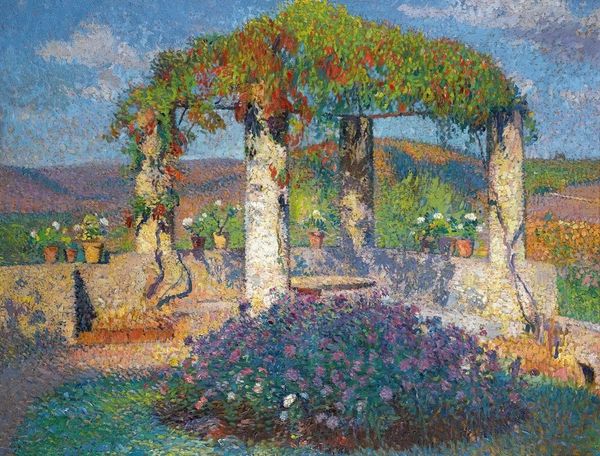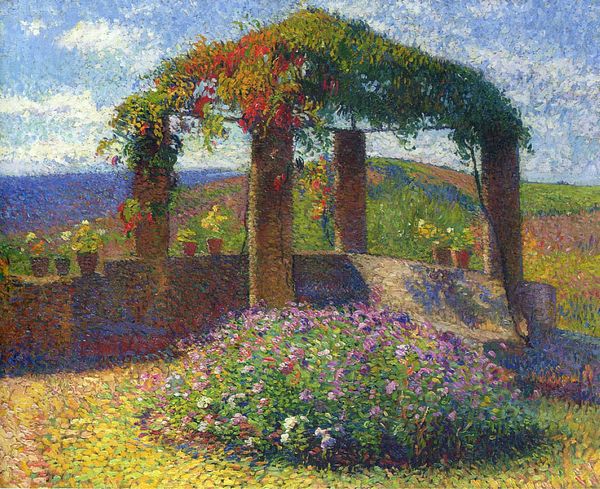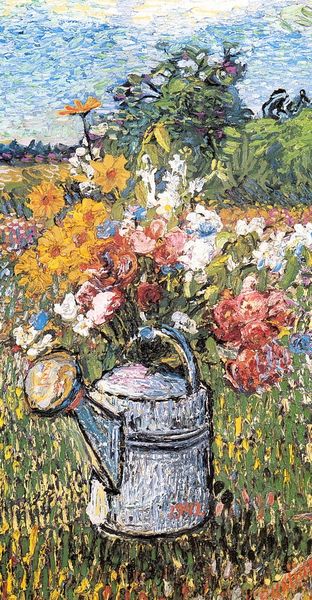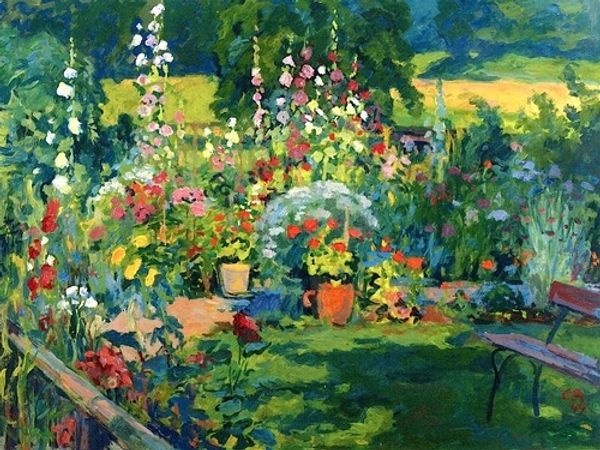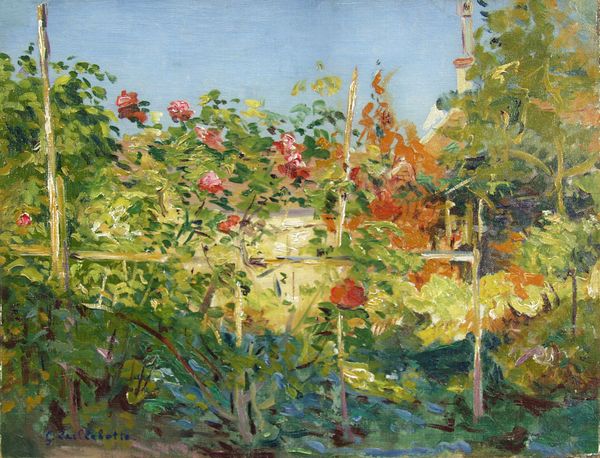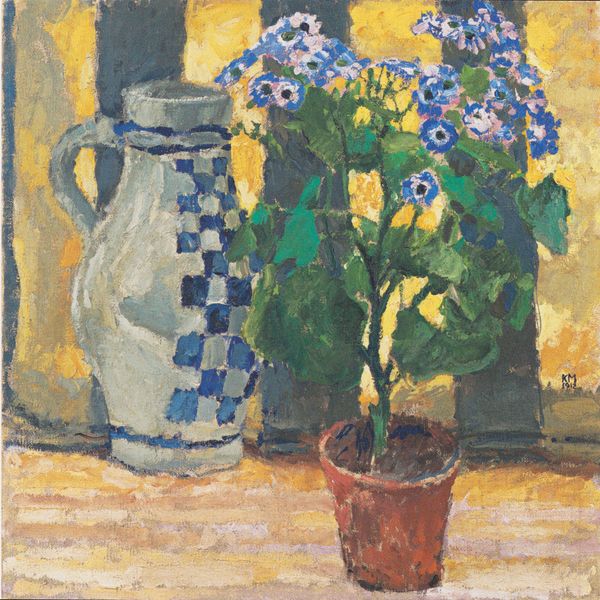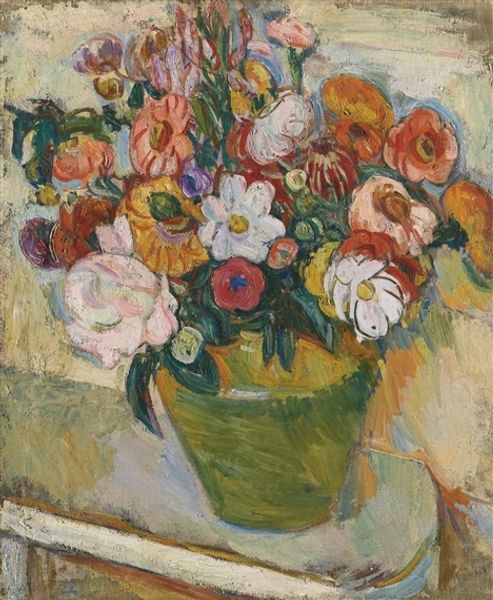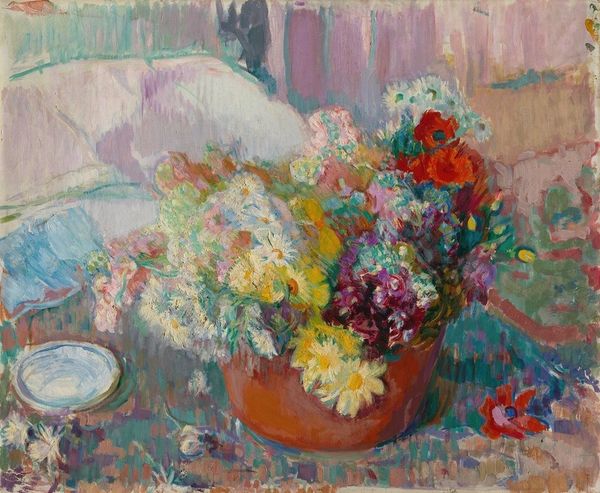
painting, plein-air, oil-paint
#
painting
#
impressionism
#
plein-air
#
oil-paint
#
landscape
#
impressionist landscape
#
oil painting
Copyright: Public domain
Curator: Let’s discuss Henri Martin's “Roses and Geraniums on the Terrace at Marquayrol," an example of his plein-air painting. It's so full of light! Editor: It is light-filled! All that visible brushwork though makes it appear coarse—I can practically feel the texture of the canvas and thick daubs of oil paint. Curator: The style is Impressionist, true. Martin certainly utilizes small touches of pure color, allowing the viewer's eye to blend them at a distance, capturing an atmospheric effect. There’s a history of Impressionism lending itself well to this style, popularized through other artists of the late 1800s as painting outdoors became more of a cultural pastime. Editor: It's more than just technique though. The handling of the paint and application really evoke the sensation of the rough-hewn pots, the sturdy terrace wall, and even the plants feel very alive through the material impasto of the paint. The choice of subject combined with such heavy paint application reminds us that these aren't necessarily luxury objects to look at or show off but rather simple potted plants that function for everyday beauty. Curator: And how does that interplay with the location? Marquayrol represents a retreat, a place for artistic contemplation in a beautiful region of France. Martin lived there for several years—can't you just imagine him setting up his easel on a bright morning and quickly trying to capture the way the light filters through those trees? Editor: Yes, and the labor…think about how long it took Martin to prepare his paints and his surfaces for these open-air works. It is like he wanted you to know his hand was present throughout every stage. How art making relies on so many unseen and unsung efforts! Curator: Certainly, but there is more to the politics than materiality; the location and idyllic subject of Martin’s paintings is an appeal to leisure. An increasingly sought-after, though infrequently achieved lifestyle, where people get to pursue leisurely activities rather than worry so heavily about the burdens of their socio-economic reality. Editor: Well said. Considering Martin’s relationship with place as it related to leisure is quite insightful! The focus on materials combined with this approach creates a unique reading for contemporary art. Curator: Absolutely. These discussions only prove art history should stay dynamic, where we welcome both new and existing analyses, and learn to use them collectively to better understand the history behind art, rather than attempt to force them apart.
Comments
No comments
Be the first to comment and join the conversation on the ultimate creative platform.
